Badminton is a widely enjoyed sport across the globe. It can be played solo or in pairs on a rectangular court, divided by a net. The essence of the game is to strike a shuttlecock (or birdie) with a racket and send it over the net.
Most badminton games take place in dedicated sports facilities, often called badminton halls, which house one or more indoor courts. Proper lighting is crucial for both indoor and outdoor matches, as games can occur at any time, whether day or night. In this article, we will explore the importance of adequate lighting for badminton courts, discuss the types of lights suitable for indoor and outdoor arenas, and summarize the effects different lighting options have on gameplay.
Table of Contents
ToggleWhy Do We Need Badminton Court Lighting?
Lighting for Nighttime Play
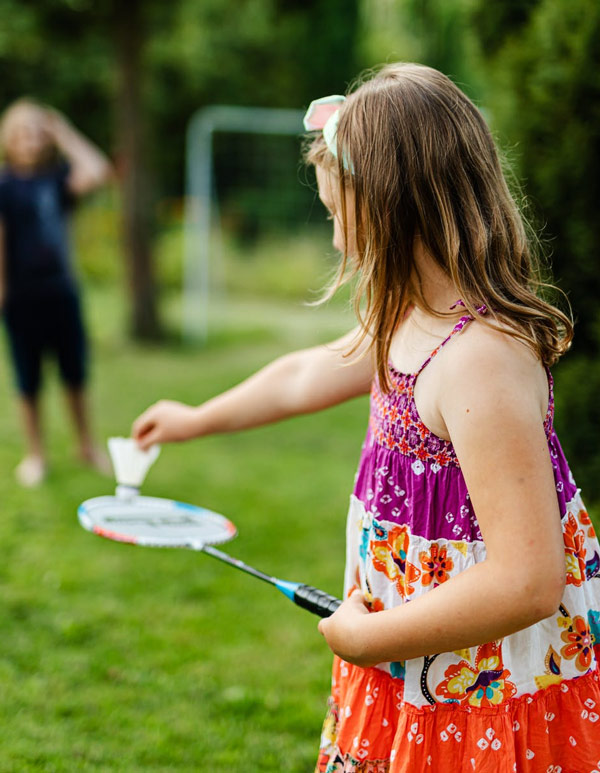 Badminton, a sport with roots tracing back to ancient times, was formally introduced to England by the British in the latter half of the last century. Today, many players, such as students and working professionals, can only engage in sports activities during the evening. Adequate lighting allows these players to enjoy badminton courts at night. In essence, the right lighting maximizes the usability of outdoor badminton courts after dark.
Badminton, a sport with roots tracing back to ancient times, was formally introduced to England by the British in the latter half of the last century. Today, many players, such as students and working professionals, can only engage in sports activities during the evening. Adequate lighting allows these players to enjoy badminton courts at night. In essence, the right lighting maximizes the usability of outdoor badminton courts after dark.
One of the fundamental rules of badminton is that the shuttlecock must not touch the ground within the boundary lines. Therefore, effective lighting is essential to ensure that players can accurately see and react to the shuttlecock, thus maintaining the integrity of the game.
Enhancing Player Vision
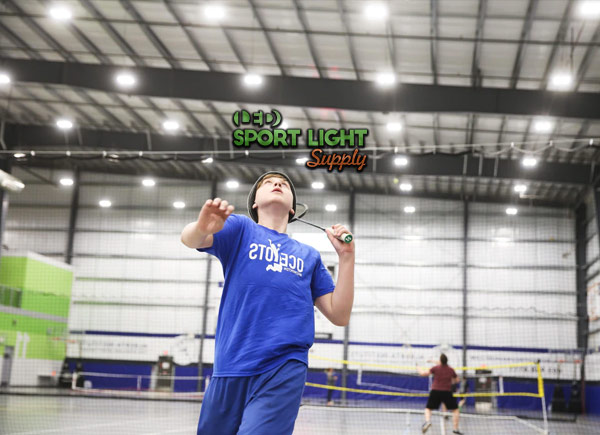 In a badminton match, the umpire oversees the game, but players often employ quick, skillful maneuvers to gain an advantage. For instance, players might use their rackets at sharp angles to strike the shuttlecock unexpectedly. Proper lighting is crucial for enhancing players’ vision, allowing them to see these fast movements clearly. Additionally, it enables the umpire to monitor the game effectively.
In a badminton match, the umpire oversees the game, but players often employ quick, skillful maneuvers to gain an advantage. For instance, players might use their rackets at sharp angles to strike the shuttlecock unexpectedly. Proper lighting is crucial for enhancing players’ vision, allowing them to see these fast movements clearly. Additionally, it enables the umpire to monitor the game effectively.
Optimal Lighting for Televised Tournaments
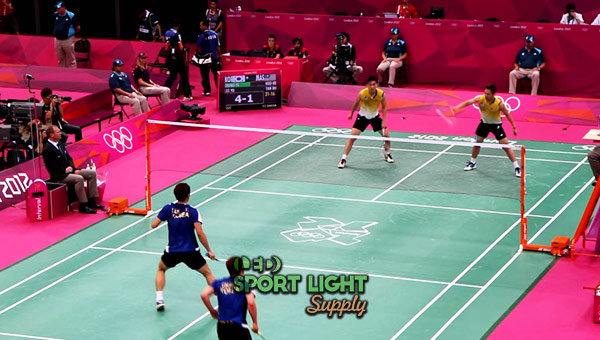 For televised badminton tournaments, lighting plays a critical role. The intense pace of the game demands high-quality lighting to ensure visibility for both players and viewers. Advanced technologies, such as LED lighting and video cameras, help maintain fairness and clarity in broadcasts. Badminton halls must be equipped with exceptionally bright lighting to meet these demands, supporting both fair play and high-quality television coverage.
For televised badminton tournaments, lighting plays a critical role. The intense pace of the game demands high-quality lighting to ensure visibility for both players and viewers. Advanced technologies, such as LED lighting and video cameras, help maintain fairness and clarity in broadcasts. Badminton halls must be equipped with exceptionally bright lighting to meet these demands, supporting both fair play and high-quality television coverage.
Moreover, adequate lighting contributes to a more comfortable viewing experience for spectators and helps attract more audience members to the venue.
What Kind of Lights Are Used for Badminton Courts?
Badminton courts today employ a precise lighting design to enhance visibility, prevent glare, and ensure uniform illumination. The lighting system typically incorporates four main types of light sources:
Flood Lights
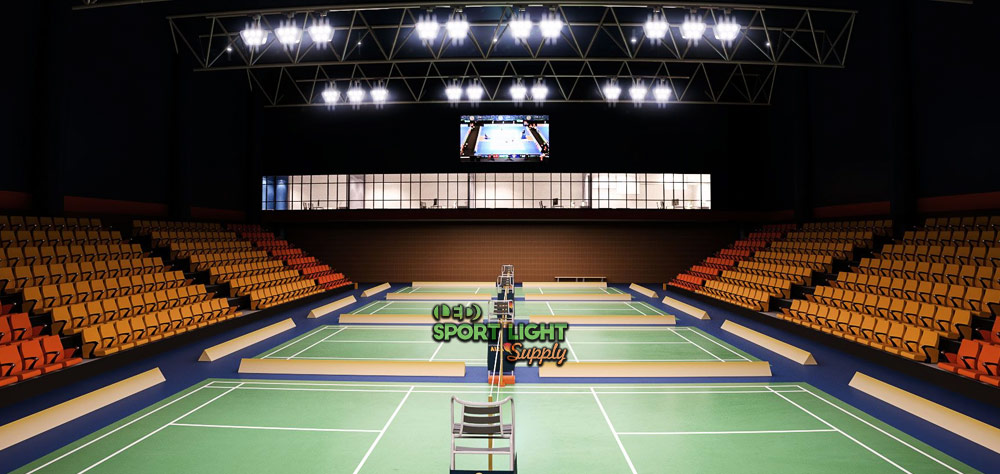
Flood lights are designed to provide a wide beam angle, making them ideal for covering large areas with diffuse light. In badminton halls, flood lights often feature a glare rating (GR) below 30, as specified in the CIE 112:1994 standards. This ensures that the brightness does not cause discomfort for players or spectators. On average, a badminton hall may use up to 36 LED flood lights, each with a power rating between 100 to 200 watts. The quality of flood lights can vary based on the level of competition and specific regulations, and all units should include safety features like shockproof grilles and secure coupling systems to prevent accidents.
Spot Lights
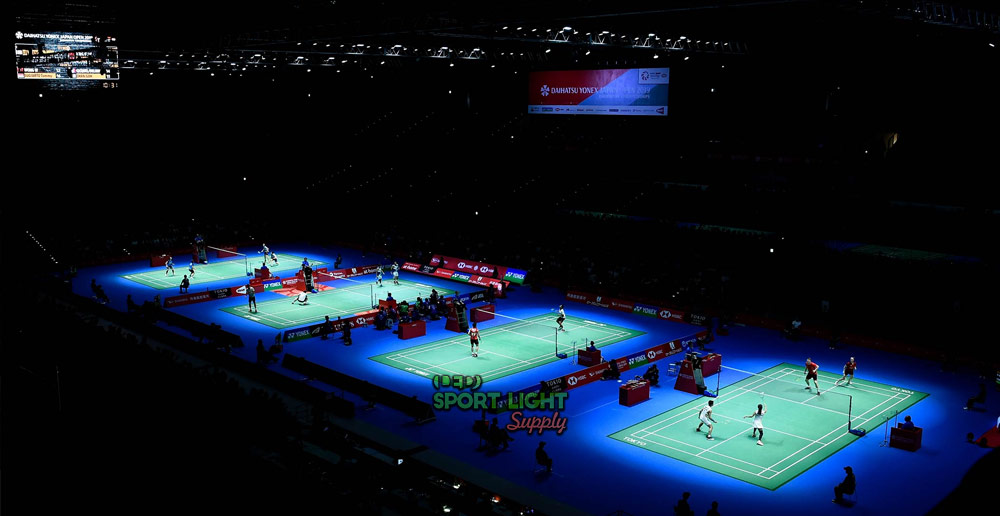
Spot lights provide a narrow beam angle, suitable for targeted illumination. They are typically installed in ceiling corners, mounts, or walls and can serve multiple purposes. Spot lights may be used as maintenance lights during repairs or to complement the primary lighting system during matches. In some sports venues, RGB spot lights are employed for creating colorful light effects before and after games or during breaks. Generally, a badminton hall will have at least four LED spot lights, each ranging from 50 to 200 watts.
High Mast Lights
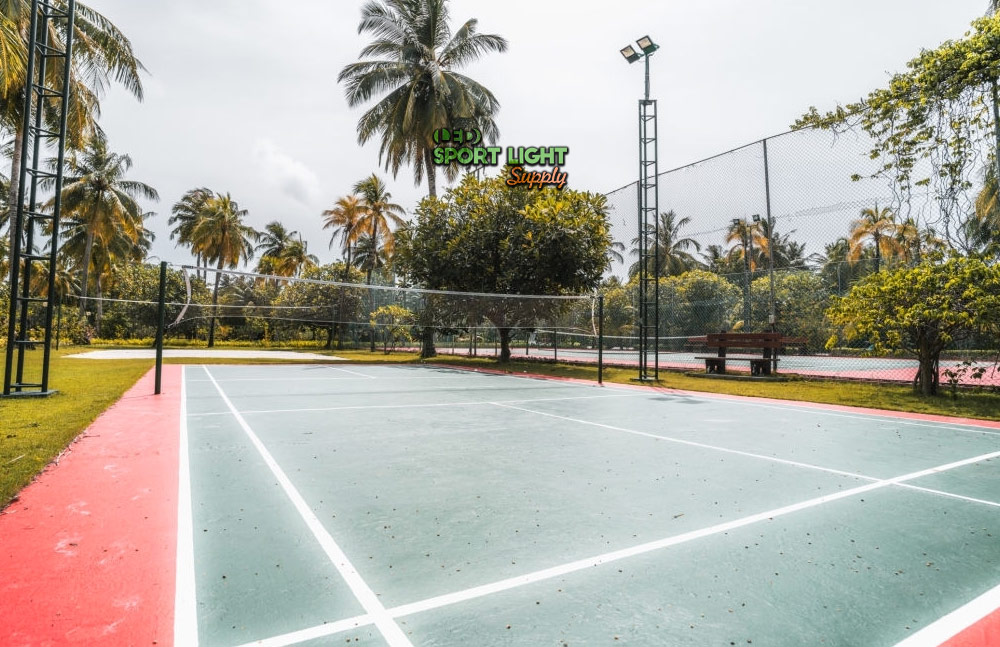
High mast lights are used for outdoor badminton courts and consist of a tall light pole and fixture. The height of the pole, usually no more than 15 meters for safety reasons, and the design of the luminaires are crucial for effective outdoor lighting. High mast lighting requires careful planning to address factors such as soil conditions and potential light pollution. Regular maintenance is necessary, as high mast lights have a lifespan of 10 to 20 years and may require replacement if they show signs of significant wear or corrosion.
High Bay Lights
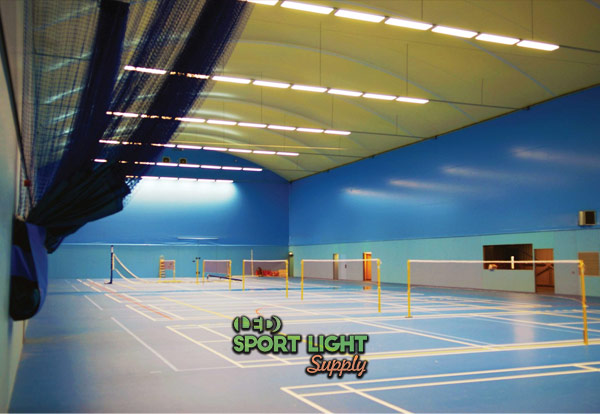 High bay lights are commonly used in indoor badminton courts and are often mounted on ceiling supports. Popular models include UFO high bay lights, which offer a wide beam angle of 120 to 150 degrees. These lights are designed to ensure that the lighting conditions are comfortable and safe for all users, including athletes, officials, and spectators. High bay lights are highly adaptable, particularly with LED technology, and can often be retrofitted into existing systems with minimal modifications. In major sports venues, high bay lights are typically around 200 watts and are chosen to enhance visibility for both gameplay and advertising, as well as for security and surveillance purposes.
High bay lights are commonly used in indoor badminton courts and are often mounted on ceiling supports. Popular models include UFO high bay lights, which offer a wide beam angle of 120 to 150 degrees. These lights are designed to ensure that the lighting conditions are comfortable and safe for all users, including athletes, officials, and spectators. High bay lights are highly adaptable, particularly with LED technology, and can often be retrofitted into existing systems with minimal modifications. In major sports venues, high bay lights are typically around 200 watts and are chosen to enhance visibility for both gameplay and advertising, as well as for security and surveillance purposes.
Each type of lighting plays a specific role in ensuring that badminton courts are well-lit, enhancing the overall playing and viewing experience.
LED vs. Metal Halide vs. Halogen vs. Fluorescent: Which is Best for Badminton Courts?
While badminton courts are generally well-lit, the choice of lighting technology can significantly impact the quality and efficiency of illumination.
LED vs. Metal Halide
Metal halide lamps are known for generating significant heat and requiring a cool-down period after being turned off. In contrast, LEDs do not have this issue. Additionally, metal halide lamps emit UV light, which can be harmful, whereas LEDs are safer and do not require protective filters. Metal halide lamps also have a shorter lifespan and their luminous efficiency decreases over time, often necessitating the addition of extra lighting to meet requirements even before replacement.
LED vs. Halogen
Halogen lamps, a modern iteration of the traditional incandescent bulb, contain halogen gas (typically iodine) and offer slightly improved performance over their predecessors. However, they are still only about 10% energy-efficient. Halogen lamps also require careful disposal due to specific recycling procedures. LEDs, on the other hand, are much more energy-efficient, with up to 53% efficiency, and offer improved performance and longevity compared to halogen lamps.
LED vs. Fluorescent
Switching from fluorescent lights to LEDs is a key step in enhancing energy efficiency in any building. Fluorescent lights take time to warm up, while LEDs turn on instantly. LEDs are also twice as efficient as fluorescent lights and require no maintenance, whereas fluorescent lights are prone to sudden failures and need regular upkeep.
Conclusion
Whether indoors or outdoors, the right lighting ensures clear visibility, enhances player performance, and supports the overall experience for both players and spectators. LED lighting stands out as the optimal choice due to its energy efficiency, long lifespan, and minimal maintenance requirements compared to metal halide, halogen, and fluorescent options. By understanding the benefits and limitations of each lighting type, badminton hall owners can make informed decisions to ensure their facilities are well-lit and meet the needs of modern play and broadcasting standards.
